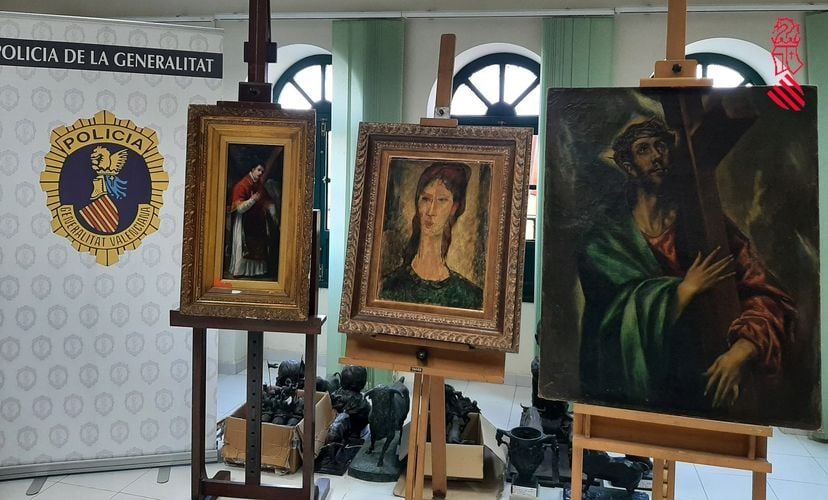Crime
Spanish Police Seized Forged Paintings Attributed to El Greco, Goya, and Modigliani After a Dealer Tried to Sell Them for €12.5 Million
Buyers had already lined up for the fake paintings.

Buyers had already lined up for the fake paintings.

Artnet News

Police in Spain have intercepted three forged paintings attributed to El Greco, Francisco de Goya, and Amedeo Modigliani.
The counterfeit canvases came from a non-specialist collector based in the province of Toledo who had intended to sell the works as originals, according to an announcement from the Historical Heritage group of the Generalitat Police in Valencia. The asking price? A combined €12.5 million ($14.6 million).
The seller, whose name has not been revealed, allegedly worked with numerous dealers to offer the works for sale in Switzerland, Mexico, and Germany in exchange for a 10 percent commission. Potential buyers had been lined up.
??La Policía de @generalitat interviene obras falsas de Modigliani, El Greco y Goya que iban a venderse por 12,5 M€ en el mercado negro
?Un coleccionista intentaba, presuntamente, comercializar las obras en el mercado negro
➕INFO ?https://t.co/DPj5C28OqL
⬇️⬇️ pic.twitter.com/SSUK9uU6wr— GVA Justícia, Interior i Adm. Pública (@GVAjusticia) March 28, 2021
The Modigliani facsimile, a chest-up portrait of a woman, was the prize of the bunch, offered up for €8.5 million ($10 million). It included the artist’s forged signature on the reverse and falsified documents of authenticity. The Valencian Institute of Conservation assisted with the investigation by proving the artworks to be fake.
The El Greco and Goya works, meanwhile, were priced at €2.5 million ($2.9 million) and €1.5 million ($1.7 million), respectively. Experts from the National Museum del Prado and the Sephardic Museum of Toledo found these paintings to be inauthentic. (Representatives from the two institutions did not immediately respond to requests for comment.)
All three artworks have been seized by police while the results of the investigation, including technical reports from the museums, were shared with a Spanish court.
“The resale of forgeries is a persistent problem in the art market that worries police agencies,” said the head of the Historical Heritage group, Antonio López, in a statement, “but also collectors, dealers of art, and the families heirs of the artists, who see how the illegal circuits of commerce increase.”